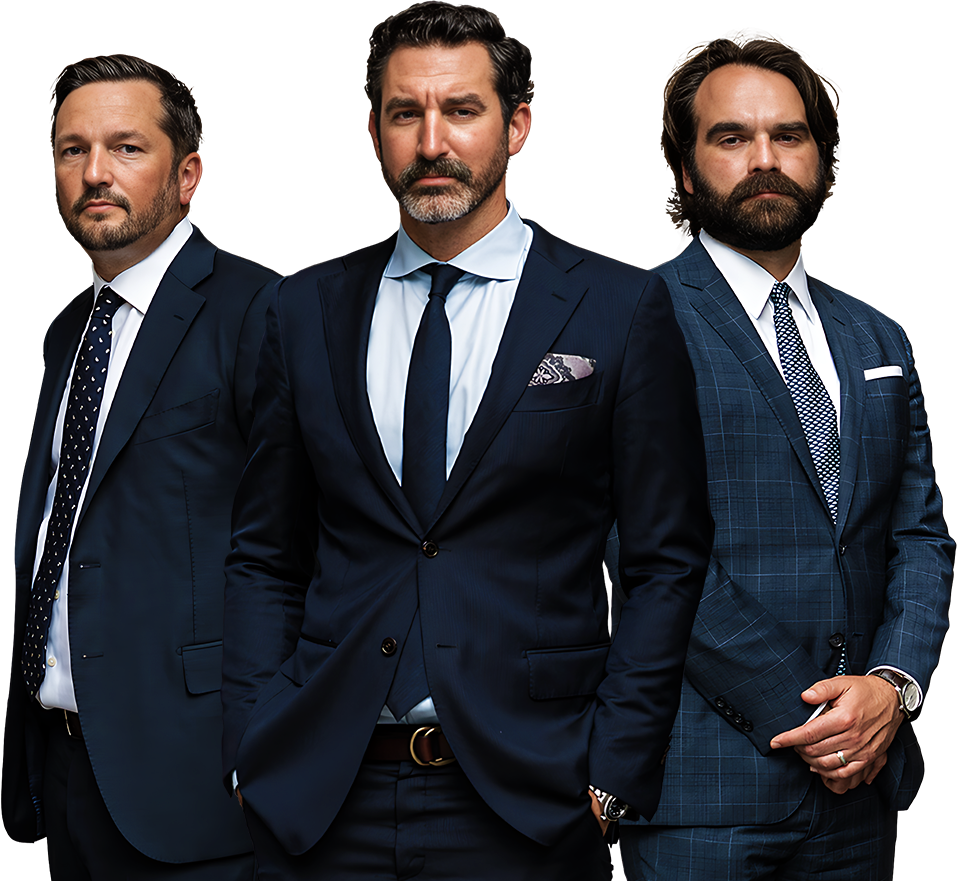Understanding Neck Sprains After Car Accidents
Many people experience neck sprains after car accidents. Whiplash is a common neck injury caused by sudden, forceful back-and-forth movement of the head and neck that often occurs in car accidents. In fact, even a minor car accident can cause a neck sprain. The force of the impact can cause the ligaments and muscles in the neck to overstretch or tear. This can lead to pain, stiffness, and decreased range of motion in the neck.
Symptoms of Neck Sprains After Car Accidents
The symptoms of a neck sprain can vary depending on the severity of the injury. Common symptoms include:
- Common symptoms include:
- Pain
- Stiffness
- Decreased range of motion
- Headaches
- Numbness or tingling
- Weakness
- Dizziness
Treatment for Neck Sprains After Car Accidents
The treatment for a neck sprain will depend on the severity of the injury. Common treatments include:
- Rest
- Ice
- Heat
- Physical therapy
- Medication
- Surgery (in severe cases)
Recovery from Neck Sprains After Car Accidents
Recovery from a neck sprain can take time. The length of time will depend on the severity of the injury. Most people can expect to recover within a few weeks or months. However, some people may experience chronic pain or other long-term problems.
Preventing Neck Sprains After Car Accidents
There are several things you can do to prevent neck sprains after car accidents. These include:
- Wear a seat belt
- Adjust your headrest
- Maintain a safe following distance
- Avoid driving while drowsy or under the influence of alcohol
- Take frequent breaks on long trips
Neck Sprain After Car Accident: A Comprehensive Guide
After a jarring car accident, you might end up with a neck sprain – an injury to the muscles and ligaments in your neck. Pain, stiffness, and reduced range of motion are telltale signs of this painful condition. If you suspect you’ve suffered a neck sprain, it’s crucial to seek medical attention promptly to avoid further complications.
Causes of Neck Sprains in Car Accidents
The abrupt force of a car accident can cause your head to jerk forward, backward, or sideways, straining the muscles and ligaments in your neck beyond their limits. This sudden movement can result in the stretching or tearing of these tissues, leading to a neck sprain. The impact of the accident, the direction of the force, and your body’s position during the collision all play a role in determining the severity of the sprain.
Types of Neck Sprains
Neck sprains can range from mild to severe, depending on the extent of the injury. Mild sprains typically involve minor stretching or tearing of the neck muscles, causing discomfort and stiffness. Moderate sprains indicate more significant muscle damage, resulting in severe pain, reduced neck mobility, and possible bruising. In severe cases, the ligaments that stabilize the neck may be torn, causing instability, intense pain, and potential neurological symptoms.
Symptoms of Neck Sprains
Pain is the most common symptom of a neck sprain, ranging from mild discomfort to severe throbbing. Stiffness and reduced range of motion are also common, making it difficult to turn or tilt your head. You may experience muscle spasms, headaches, and tenderness in the affected area. In severe cases, neurological symptoms like numbness, weakness, or tingling may occur, warranting immediate medical attention.
Treatment Options for Neck Sprains
Treatment for neck sprains depends on the severity of the injury. Mild sprains often respond well to rest, ice, compression, and over-the-counter pain relievers. Physical therapy may be recommended to restore range of motion and strengthen the neck muscles. In more severe cases, prescription medications, injections, or even surgery may be necessary to address the underlying damage and relieve pain.
Neck Sprain After Car Accident: What You Need to Know
If you’ve been involved in a car accident, there’s a chance you may have suffered a neck sprain. Neck sprains are common injuries that can cause pain, stiffness, and other uncomfortable symptoms. While most neck sprains heal with time and treatment, it’s important to be aware of the potential symptoms and how to care for your injury.
Symptoms of Neck Sprains
Neck sprains occur when the ligaments that support your neck are stretched or torn. This can happen during a car accident, when your head is suddenly jerked forward or backward. Symptoms of a neck sprain can include:
- Pain
- Stiffness
- Swelling
- Limited range of motion
- Headaches
- Dizziness
- Numbness or tingling in the arms or hands
If you’re experiencing any of these symptoms after a car accident, it’s important to see a doctor to get a diagnosis and treatment plan.
Treatment for Neck Sprains
Treatment for neck sprains typically involves rest, ice, and pain medication. In some cases, physical therapy may also be recommended to help you regain range of motion and strength in your neck.
Most neck sprains heal within a few weeks with treatment. However, in some cases, the injury may take longer to heal or may cause chronic pain. If you’re experiencing persistent pain or other symptoms after a neck sprain, it’s important to see a doctor for further evaluation.
Preventing Neck Sprains
There are a number of things you can do to help prevent neck sprains, including:
- Wear a seat belt when driving or riding in a car.
- Adjust your headrest so that it supports your head and neck.
- Take breaks when driving long distances to get out and stretch your neck.
- Strengthen the muscles in your neck by doing exercises such as neck rolls and shoulder shrugs.
By following these tips, you can help reduce your risk of neck sprains and other injuries.
Oh, man! You’ve been in a car accident, and now you’re dealing with a neck sprain. It’s a real pain in the neck, literally. But don’t worry, you’re not alone. Neck sprains are one of the most common injuries after a car accident.
A neck sprain is a stretch or tear of the muscles or ligaments in your neck. It can range from a mild strain to a more severe tear. Symptoms of a neck sprain can include pain, stiffness, swelling, and difficulty moving your neck. The good news is that most neck sprains will heal with time and proper treatment.
Treatment for Neck Sprains
The first step in treating a neck sprain is to rest it. This means avoiding activities that aggravate your pain. You should also ice your neck for 20 minutes at a time, several times a day. Compression can also help to reduce swelling. You can use a neck brace or wrap to apply compression.
Elevation can also help to reduce swelling. Try to keep your head elevated above your heart when you’re lying down. Over-the-counter pain relievers, such as ibuprofen or acetaminophen, can also help to relieve pain and inflammation.
If your neck sprain is more severe, you may need to see a doctor. They may recommend physical therapy or other treatments to help you recover. In rare cases, surgery may be necessary.
Preventing Neck Sprains
The best way to prevent neck sprains is to avoid activities that can strain your neck. This includes contact sports, lifting heavy objects, and sleeping in an awkward position. If you do experience a neck sprain, follow the treatment tips above to help it heal quickly.
In the meantime, take it easy and give your neck a chance to rest. Most neck sprains will heal with time and proper treatment. But if your pain is severe or doesn’t improve after a few weeks, be sure to see a doctor.
Neck Sprains After Car Accidents: A Guide to Recovery
Car accidents can be a harrowing experience, and the aftermath can include a myriad of injuries. One common ailment is a neck sprain, which occurs when the ligaments in the neck are stretched or torn. While neck sprains are typically not life-threatening, they can cause significant pain and discomfort, affecting your daily life.
Symptoms of Neck Sprains
Neck sprain symptoms can vary depending on the severity of the injury. Some common signs include:
- Pain in the neck, especially when moving the head
- Stiffness and decreased range of motion
- Headaches
- Dizziness or nausea
- Numbness or tingling in the arms or hands
Recovery Time from Neck Sprains
Recovery time from neck sprains varies depending on the severity of the injury, but most people recover within a few weeks. Grade 1 sprains, the mildest type, typically heal within a few days to weeks. Grade 2 sprains, which involve a partial tear of the ligament, may take several weeks to heal fully. Grade 3 sprains, the most severe type, involving a complete tear of the ligament, can take months to heal and may require surgery.
Treatment for Neck Sprains
Treatment for neck sprains typically involves pain relievers, ice packs, and rest. In some cases, a doctor may recommend physical therapy to help restore range of motion and strengthen the neck muscles. In severe cases, surgery may be necessary to repair the damaged ligament.
Rehabilitation for Neck Sprains
Rehabilitation is an important part of recovering from a neck sprain. Physical therapy can help to improve range of motion, strengthen the neck muscles, and reduce pain. It’s crucial to follow the prescribed rehabilitation exercises regularly to maximize recovery.
Preventing Neck Sprains
There are several ways to prevent neck sprains, including:
- Maintaining good posture, especially while sitting or working at a computer
- Using a neck pillow when sleeping
- Strengthening the neck muscles through exercises
- Avoiding activities that put excessive strain on the neck, such as heavy lifting or contact sports
If you experience a neck sprain, it’s important to seek medical attention promptly to ensure proper diagnosis and treatment. With appropriate care and rehabilitation, most neck sprains will heal within a few weeks, allowing you to resume your normal activities without discomfort.
Neck Sprain After Car Accident: A Guide to Prevention and Recovery
If you’ve experienced a neck sprain after a car accident, you know how painful and debilitating it can be. The sudden, forceful impact can cause your neck muscles and ligaments to overstretch or tear, leading to stiffness, pain, and limited range of motion. In this article, we’ll delve into the causes, prevention, and treatment of neck sprains resulting from car accidents.
Causes of Neck Sprains in Car Accidents
Neck sprains are a common injury in car accidents, particularly those involving rear-end collisions. When your vehicle is struck from behind, the force can cause your head to be violently thrown back and forth. This rapid and uncontrolled movement can strain your neck muscles and ligaments, causing a sprain.
Prevention of Neck Sprains in Car Accidents
To prevent neck sprains in car accidents, it’s crucial to take the following precautions:
- Wear a Seatbelt: Your seatbelt is your first line of defense against neck injuries. It keeps you securely in place, preventing your head from moving too far forward or backward in the event of a collision.
- Adjust the Headrest: The headrest in your car provides support for your head and neck. Adjust it to the proper height so that it rests just behind the back of your head. This helps to cradle your head and minimize the risk of a neck sprain in a rear-end collision.
- Maintain a Safe Following Distance: Giving yourself plenty of space between your vehicle and the one in front of you gives you more time to react to sudden stops or changes in traffic. This reduces the likelihood of a rear-end collision and, consequently, the risk of a neck sprain.
- Avoid Distracted Driving: When you’re texting, eating, or otherwise distracted while driving, you’re less likely to be prepared for an unexpected event. Stay focused on the road to minimize your risk of accidents.
- Get Regular Vehicle Maintenance: Regular maintenance of your vehicle, including the brakes and tires, helps ensure that your car is operating safely. Well-maintained brakes allow you to stop smoothly and avoid sudden stops that could cause a neck injury.
- Strengthen Your Neck Muscles: Engaging in exercises that strengthen your neck muscles can help protect them from sprains. One example is the chin tuck: Gently tuck your chin toward your chest and hold for a few seconds. This exercise strengthens the muscles that support your head and neck.




Leave a Reply